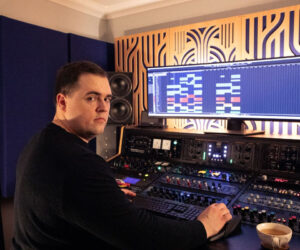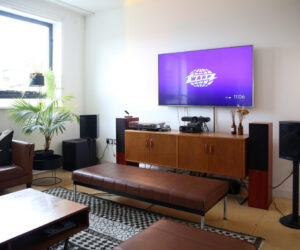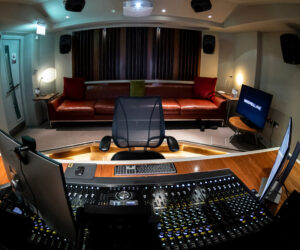Swiss manufacturer PSI Audio announces that one of the most illustrious among the AVAA users is mastering engineer Bob Katz, who employs three C20 units in his Florida-based studio.
Aggressive or soft, analog or digital – Katz’s key to a good sounding record is the use of microdynamics. “And in order to be able to make a judgment, I need to have the finest acoustics.”
Katz combined conventional absorption with the AVAA system from PSI Audio. The Active Velocity Acoustic Absorber affects the acoustic impedance of the surrounding air by drawing out the low frequencies – almost as if there was a hole in the wall.
A microphone measures the acoustic pressure, the information is processed and a transducer membrane is driven to neutralize the sound waves, thus eliminating room modes more efficiently than a traditional absorber many times the size. Treating the frequency range between 15 and 150 Hz, the AVAA C20 can take care of most modal resonances – without affecting the direct sound of the monitors.
Katz explains the importance of a neutral and linear listening environment with the graphic aid of a bell curve. “When the loudspeakers in your room fall right in the middle of the curve between the bassiest, thumpiest, ugliest sounding speakers you have ever heard on the one side, and the brightest, harshest, thinnest system you have ever heard on the other side, then you are going to be able to translate from your mastering room to the widest variety. That is why you want the best and most accurate acoustics to make your judgments – it will translate to the widest variety of listeners.”
“You need a reasonably large room which has been treated to produce an even Schroeder curve,” Katz explains, “meaning that the reverberation with respect to frequency is even throughout the octaves.”
Katz describes his first encounter with the Swiss bass trap. “The AVAA responds to pressure changes at any frequency from 15 Hz to 150 Hz, so if there is a problem at one frequency or another, it will take care of it transparently. It doesn’t add any coloration, it doesn’t distort, it just takes care of it. When you turn the AVAAs on, there is an eerie silence and suddenly your focus is on the sound coming from the main speakers.”
The PSI Audio AVAA C20 has one feature not commonly asked for in acoustic elements: portability. And yet, this feature can make an engineer’s life a lot easier, as Katz explains. “A year after I got the AVAAs, I changed my loudspeaker system from one brand to another, and the new speakers are located about one foot further away from me than the previous loudspeakers. I also moved the subwoofers, to work in tandem with the new mains position, so the entire low frequency resonance points, the modal character of my room changed.”
Instead of bass resonances in the corners, Katz now had tangential modes building up between front and rear wall. While conventional acoustic elements would have been attached to the walls and quite hard or even impossible to move, the PSI Audio system made adjusting the acoustics easy.
“I was able to pick up the AVAA traps, move them out of the corners and distribute them across the back wall instead. It almost seems to defy the laws of physics: How can something that small and lightweight deal with 20 Hz frequencies?”
The PSI Audio Active Velocity Acoustic Absorber AVAA C20 is available immediately. The MSRP including VAT is £2,188 GBP



















